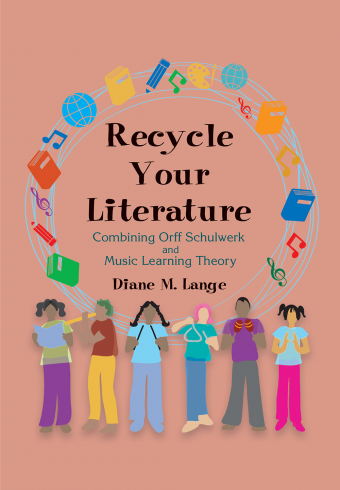I came across this book while rummaging through a free pile of classroom resources from another school. After searching online, I see this text is sold between $200-300 and that blows my mind to have it at no cost! It's a very valued resource for vocal music education teachers and now that I have completed the book I know why we're paying big bucks for this information. I'd like to mention a variety of lasting points that stuck with me to better inform you of my impressions. The first thing that comes to mind is the attention to detail the author takes in breaking down the teaching practices. Ms. Choksy is always reminding the reader of what needs to be in place before students can perform a musical task. That thoroughness is vital to their success and we know as teachers that kids connect with music when they "get it right" immediately. Little do they realize it takes the craft of a skilled music educator to prepare them for these "aha" moments. Additionally, the lesson format is very clear and easily understood, and as such allows for teachers to easily isolate areas of instruction and how to assess them along the way.
As I reflect on my notes throughout the book it appears that I'll need to expand my classroom repertoire to best reflect the tonal and rhythmic concepts presented throughout the K-5 levels. Many of the folk songs were unfamiliar to me, and I was surprised to find hidden song gems in the rough. I will admit that a few of them will not be adapted into my practice due their texts, but thankfully the author provides a variety of songs to use alternatively. There are even resources available for free that help music teachers distinguish between culturally authentic and inauthentic music of our curriculum. For more information you may visit the crowd sourced charts in this link here. Aside from this, the music has me excited to use more F and G major staff activities for grades 1 and 2. The cover picture has me wanting to stop by a craft supply store and purchase felt boards... but for now we'll make due with beat strips and sticks.
Finally, the description of listening in the general music classroom reaffirms what I've struggled with all these years: it's designed to be taught with daily music instruction. If you see the students once a week and there is limited interaction than you can not have the time to do listening activities to the fullest potential. Music teachers need to identify and prioritize how to use the precious classroom time and for me the answer is active music making every time. I would love to have a more comprehensive program, but for now we have music listening once a month and even that is a challenge. I will absolutely use the suggestions for listening when preparing composer activities from now on. I love to push myself with "new to me" ideas and seeing how they work in my music room. More often than not they are a hit, and it's texts like these that motivate me to mix things up!





